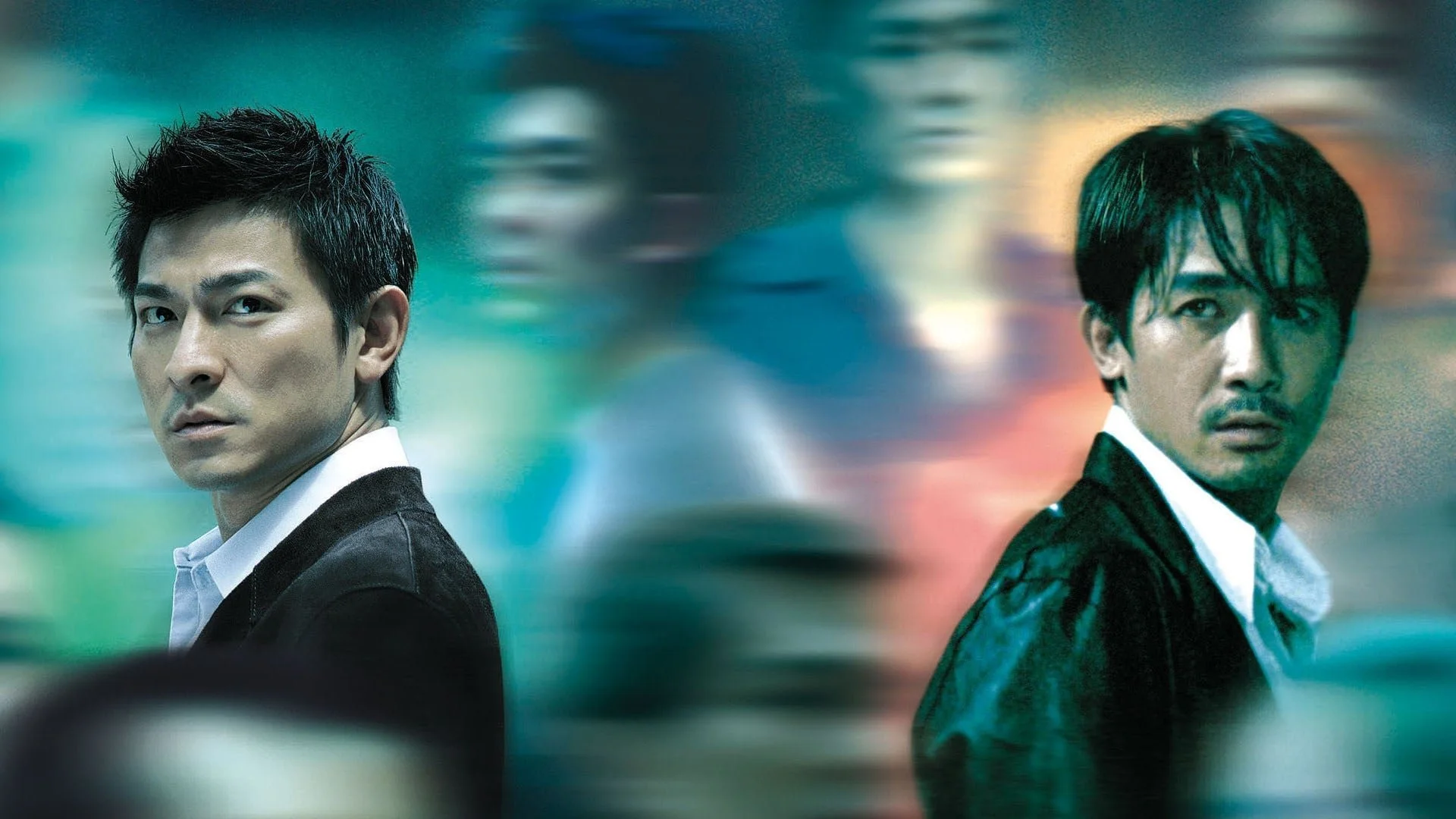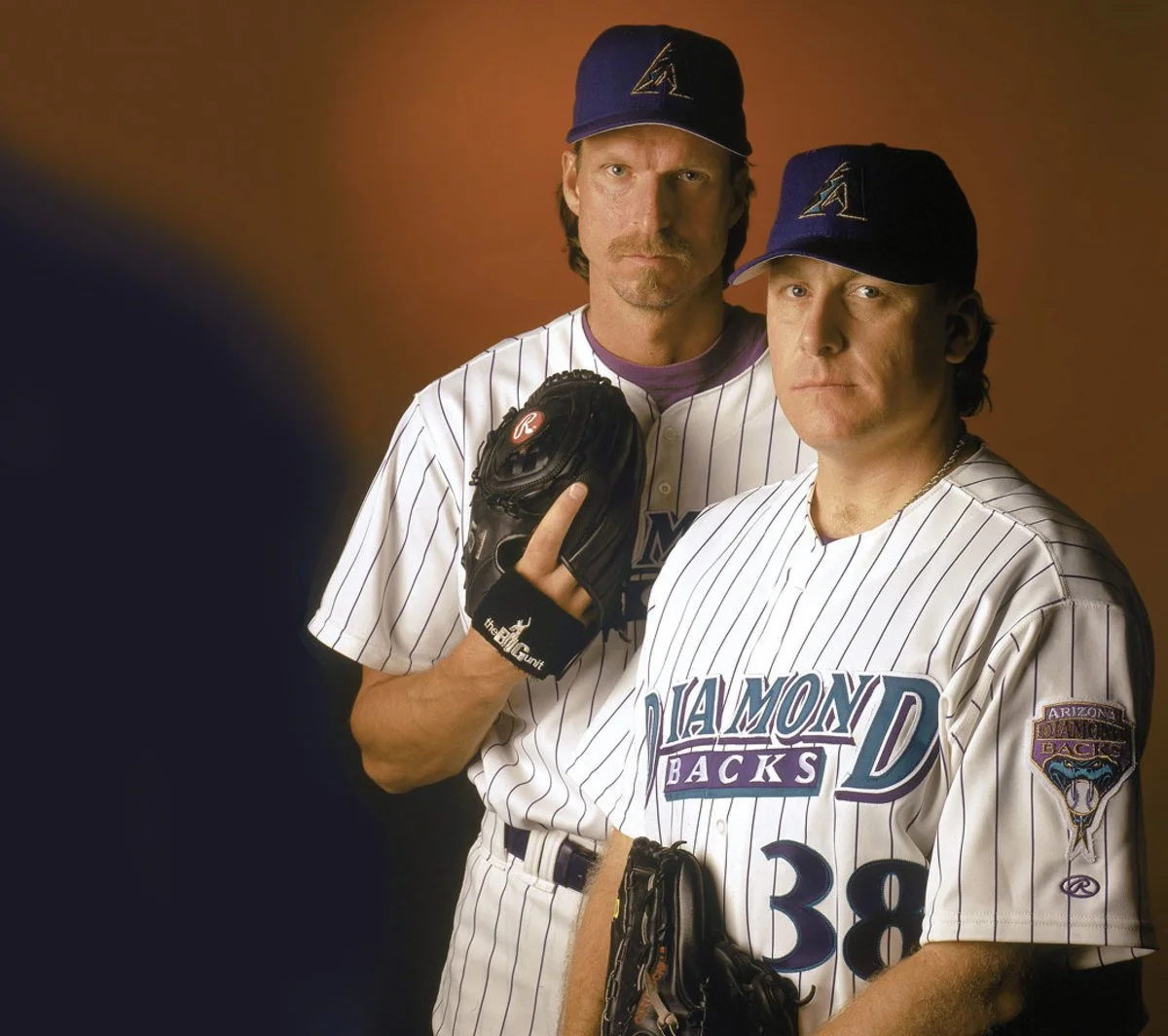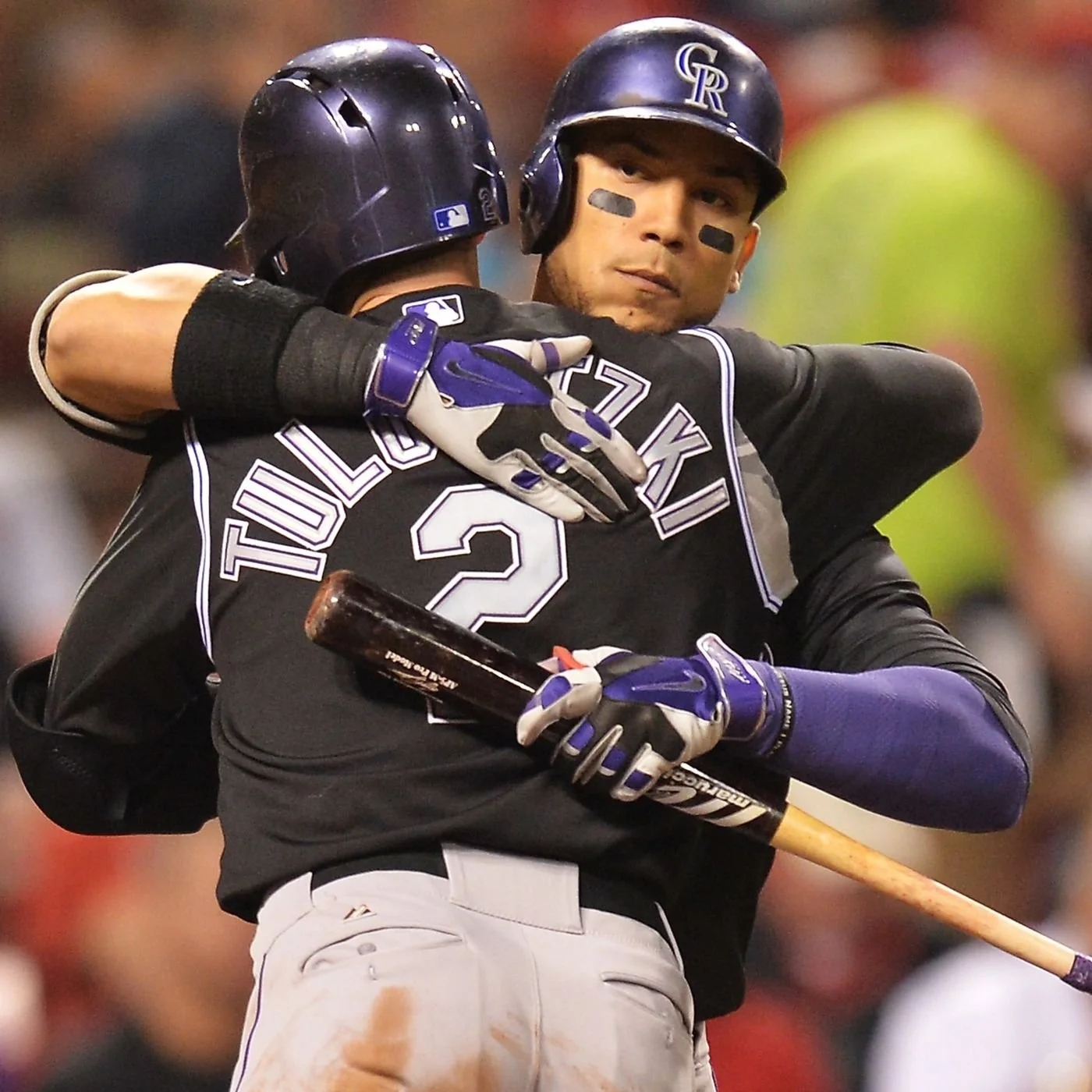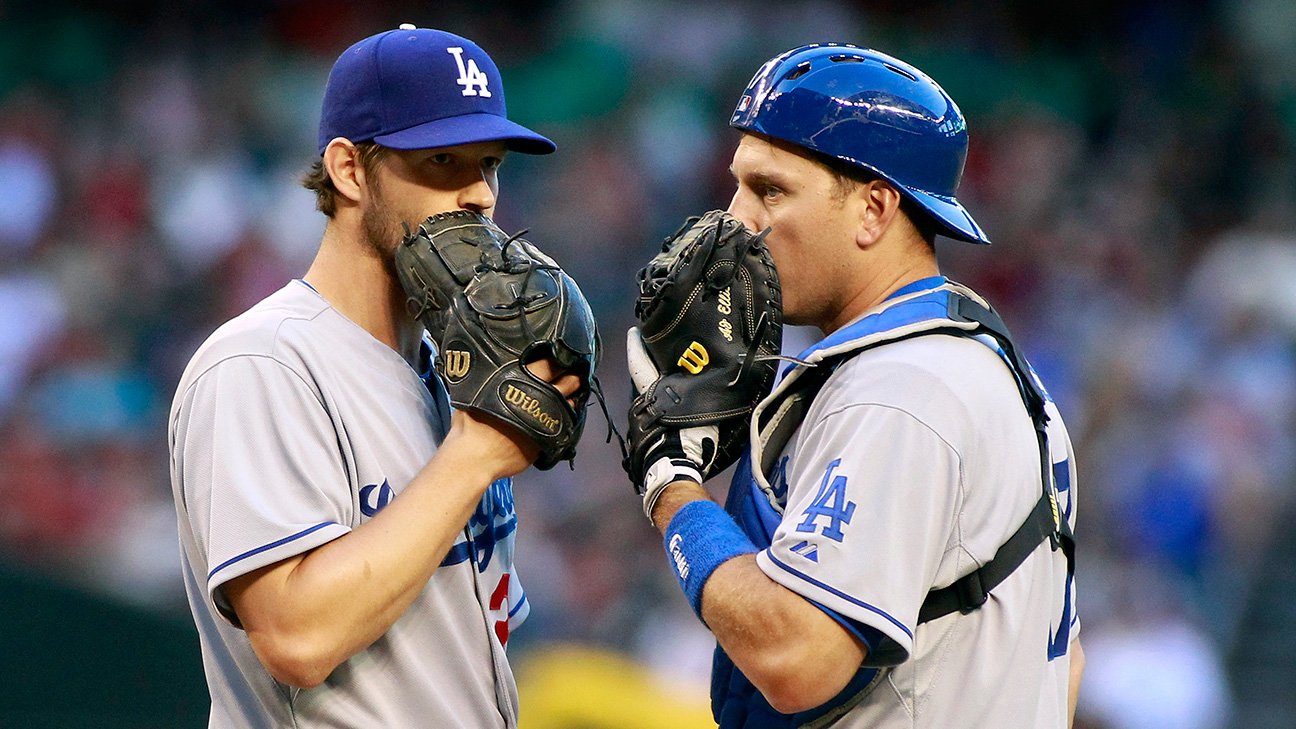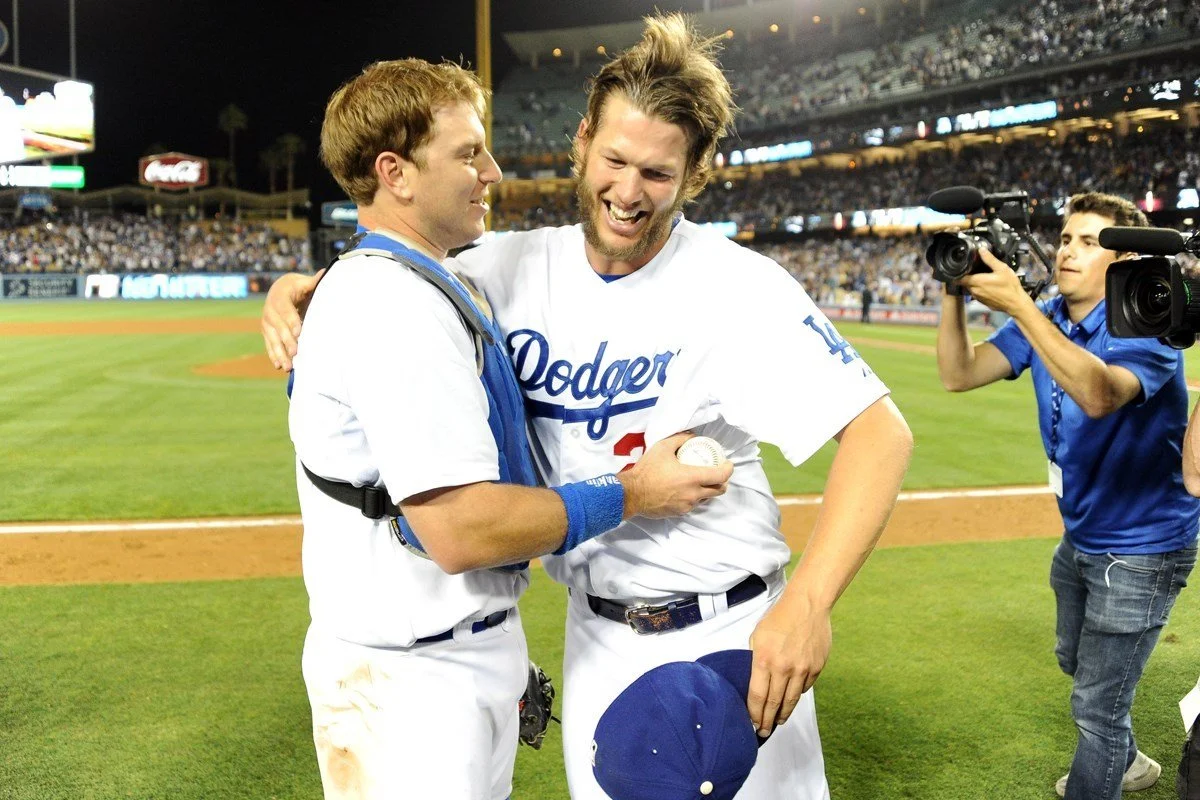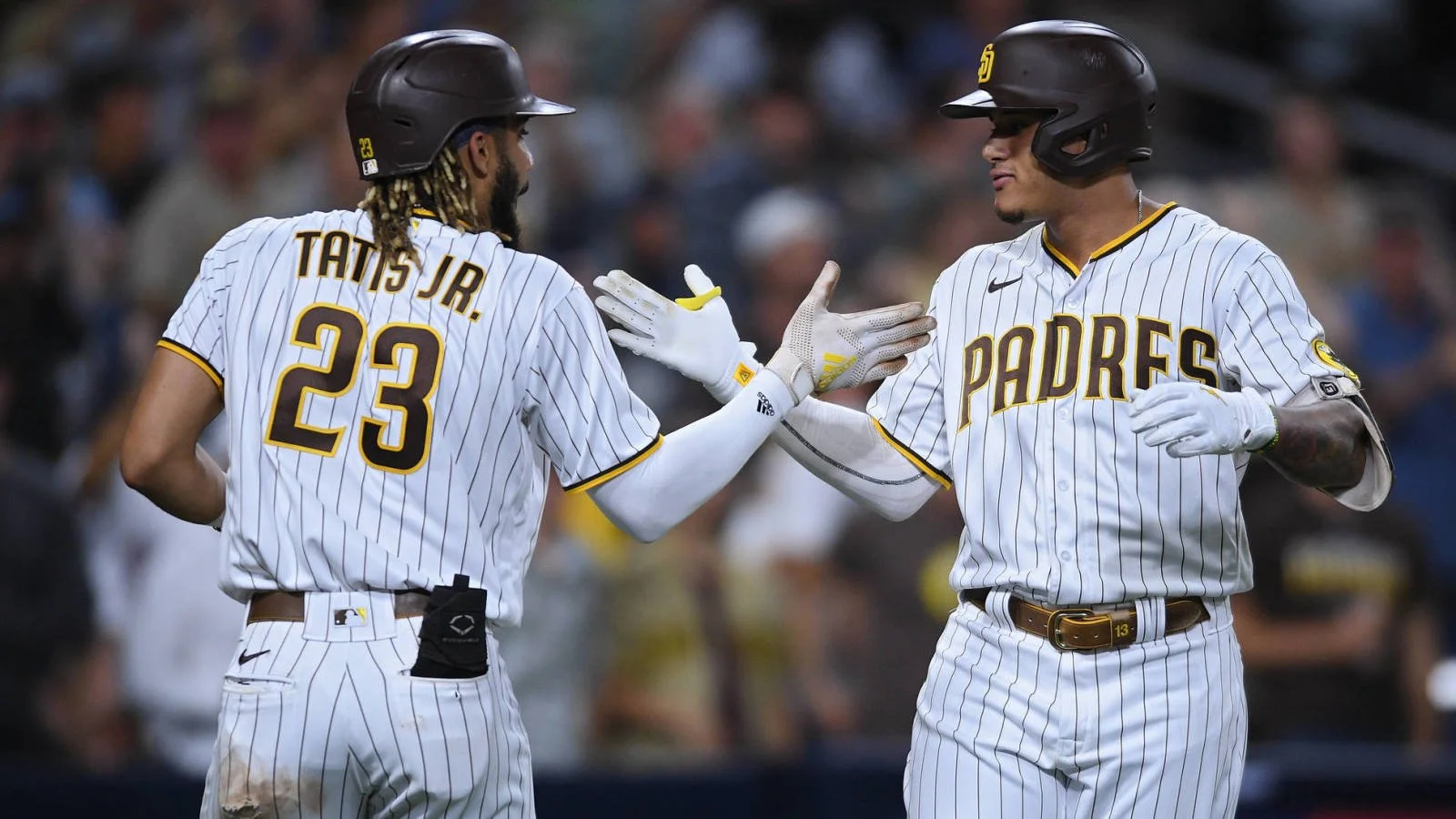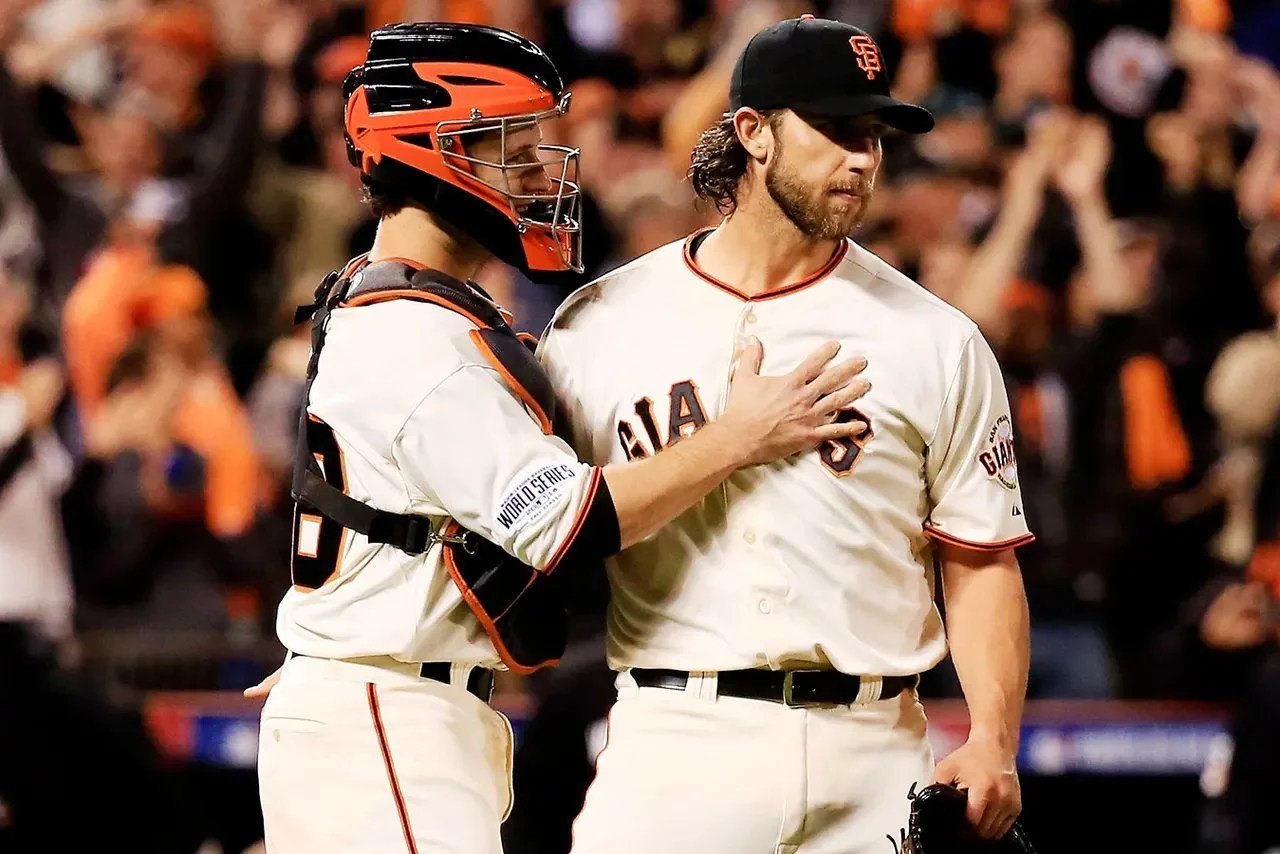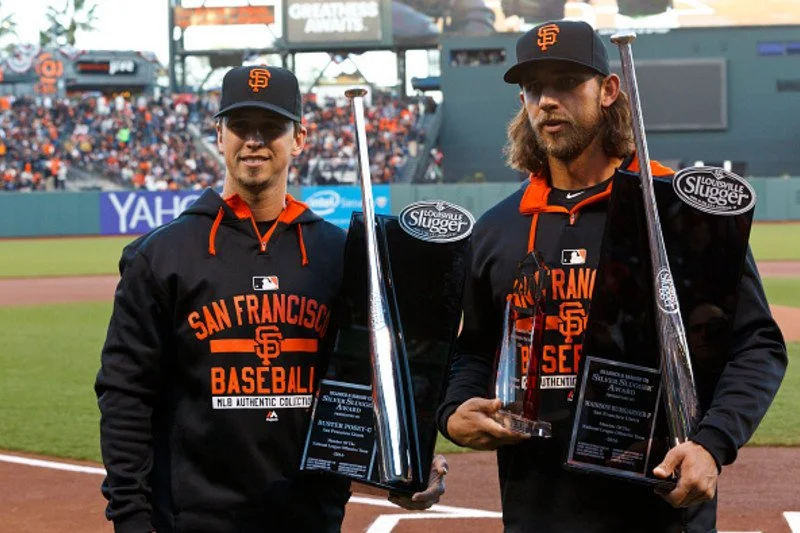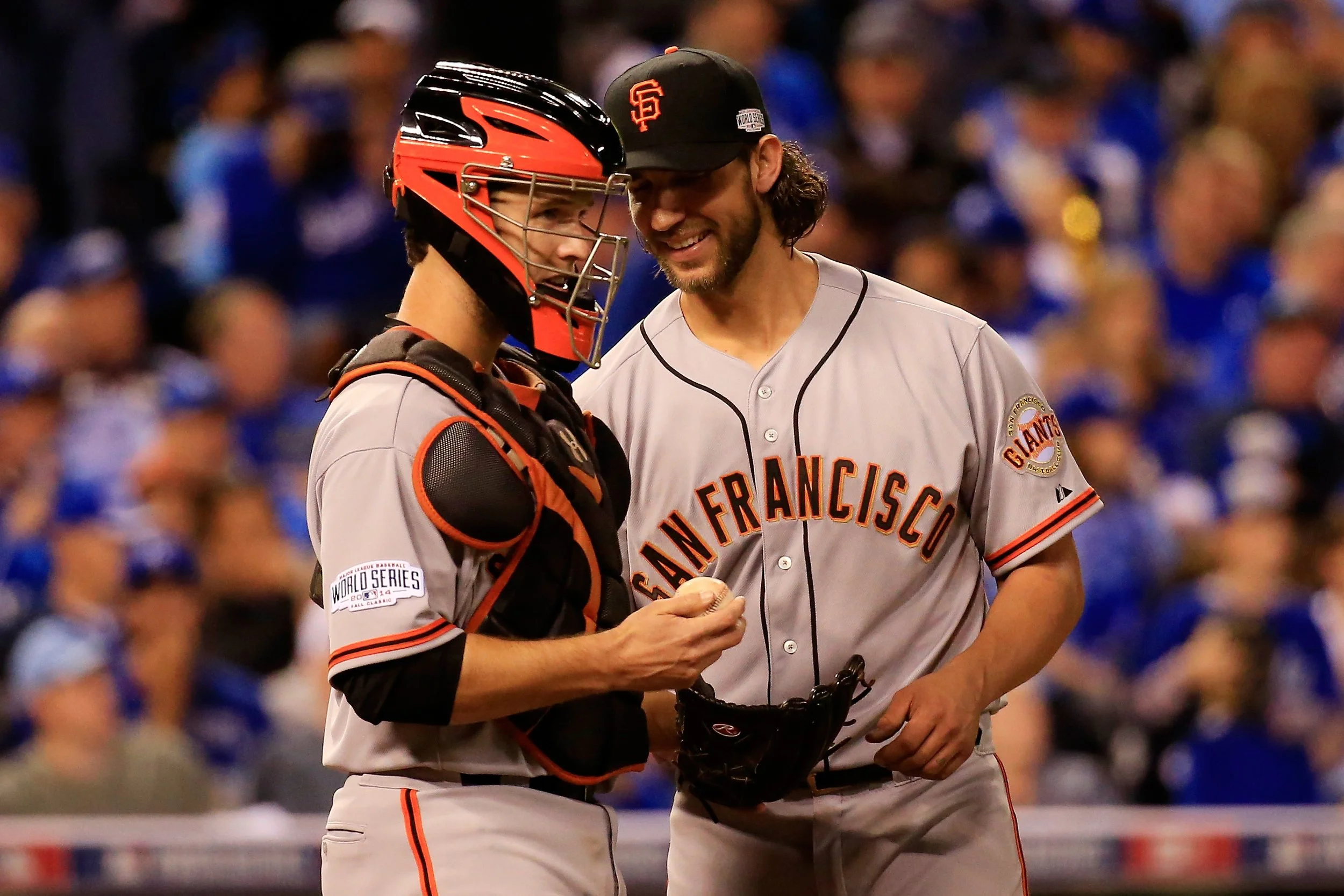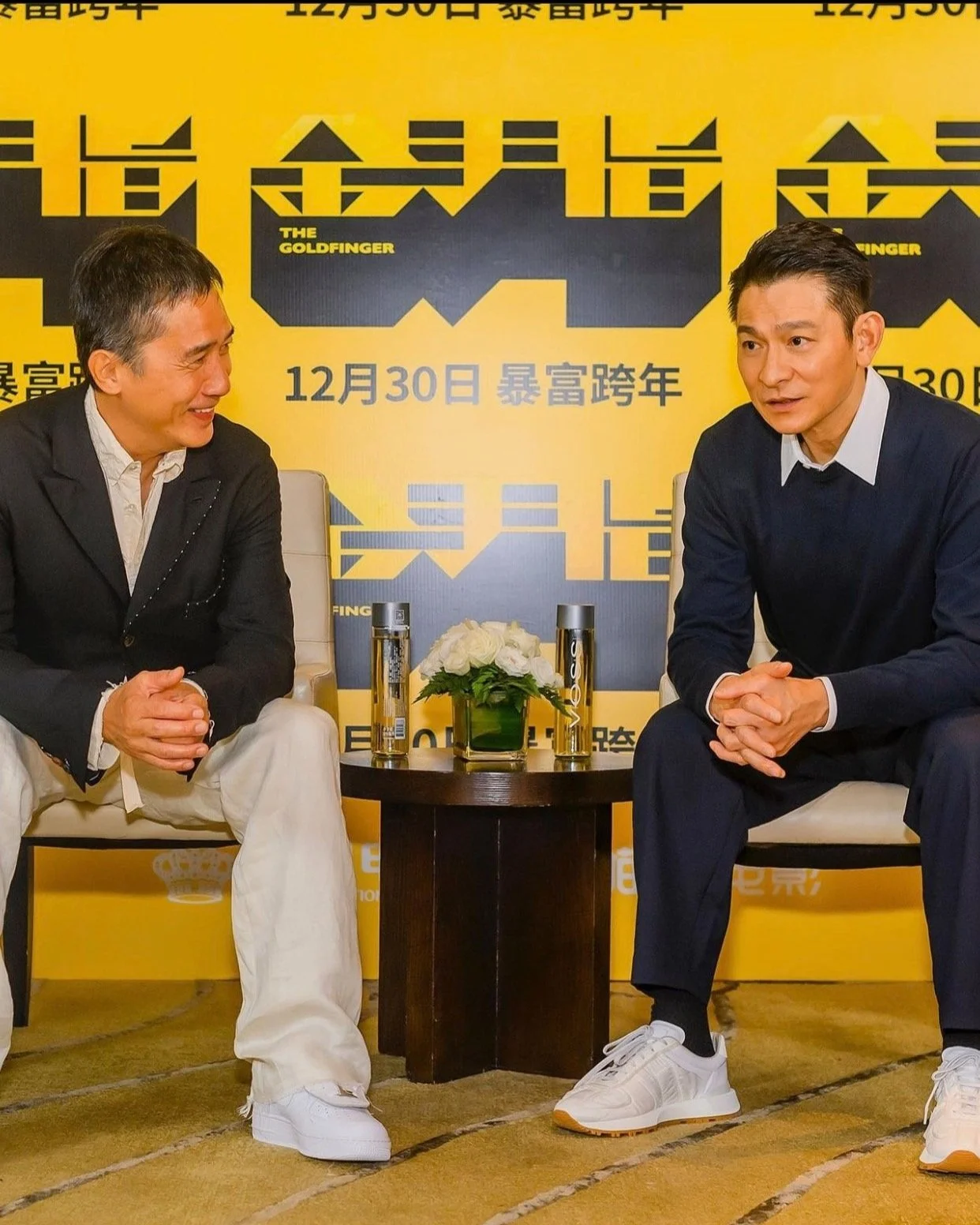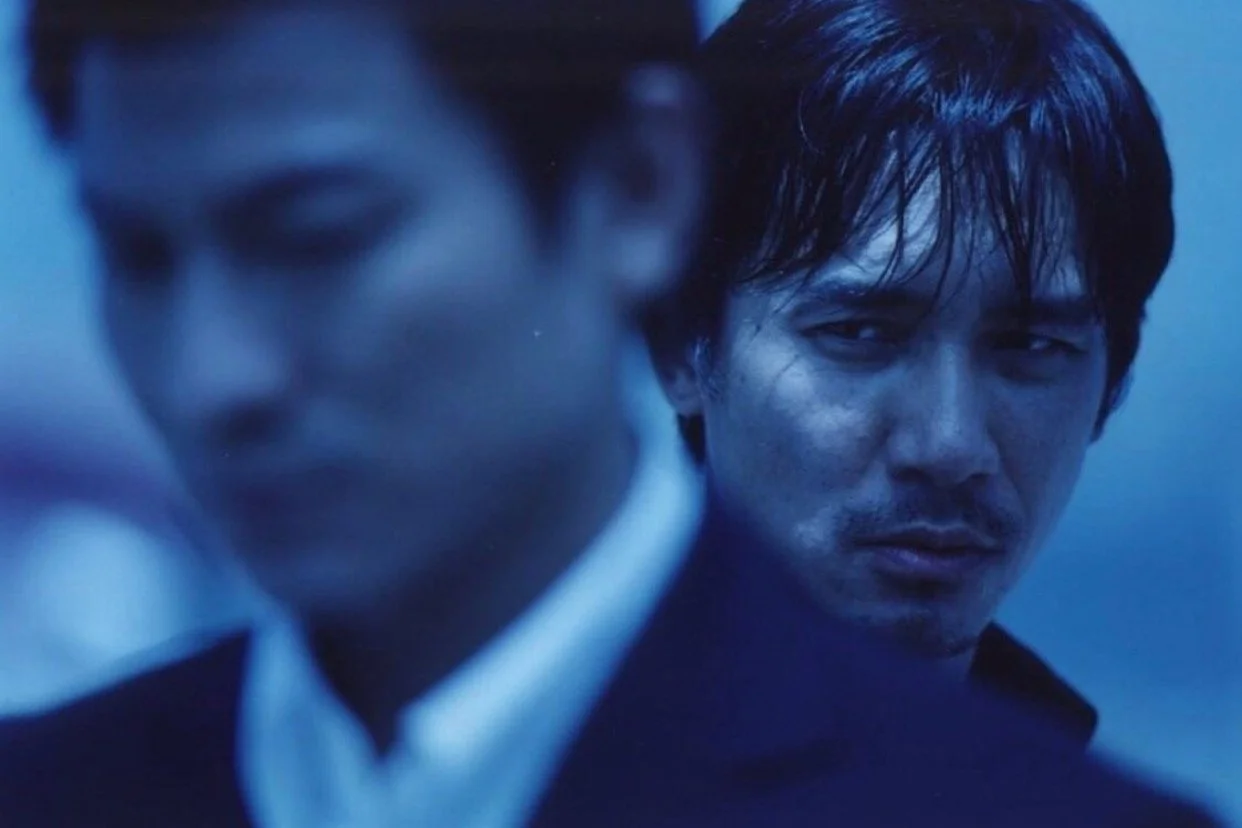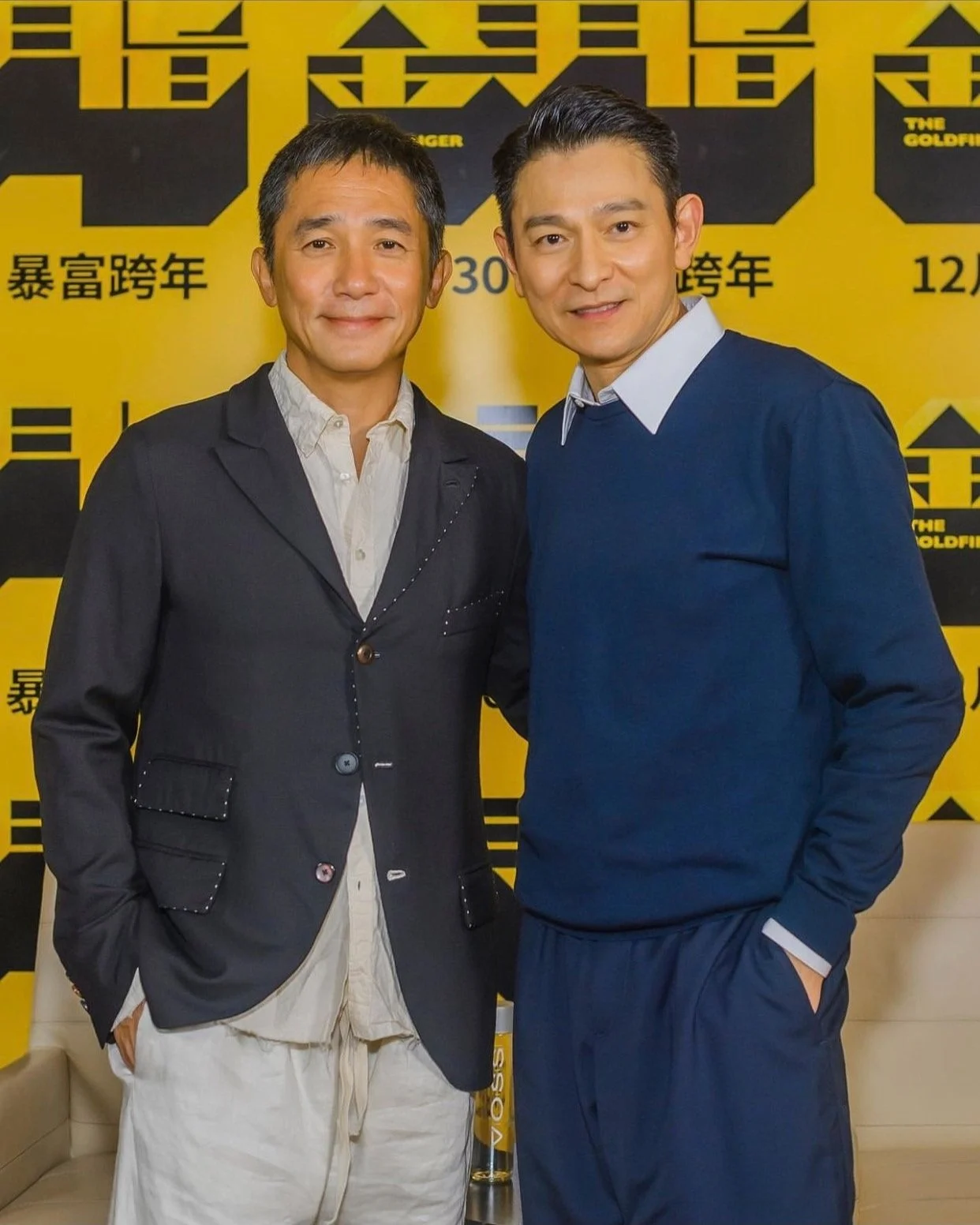Duos Who Have Made Their Mark in the NL West from 2002 to Present (2023)
Photo by: Elsa (Getty Images)
From the jump, this article wasn’t inspired by baseball. I got this article idea from an iconic duo in Hong Kong cinema. If most of you have heard of them, you likely know them as Andy Lau and Tony Leung. 2002 is the starting point in honor of their last collaboration, the world-renowned Infernal Affairs Trilogy (2002-03). 20-plus years later, The Goldfinger (2023) features them once again and is set to be shown in several places (including locations in the United States and Canada) at the end of this year and the early part of next year.
(Side note: 劉華 and 偉仔, on the slim chance you read this, thank you for inspiring this article and 嘉玲 for a couple of the pictures.)
Courtesy of: The Movie Database (TMDB)
Courtesy of: CMC Pictures Instagram (@cmc_pictures), Original Poster: Emperor Motion Pictures Instagram (@emperormotionpictures)
Whether you look at it from a baseball, film, or any other perspective, 20-plus years is a chunk of time. As a paradox or counter to Andy and Tony not starring in the same film for 20-plus years, I gathered one set of NL West duos from each team (2002 forward) who in the meantime, have etched their names in divisional as well as league history.
There are combinations of players of different positions: batteries (pitchers and catchers), only pitchers, and infielders and outfielders to give variety. As individual players, they might not have accomplished as much, had they not been teammates.
Great batteries came to mind first because of both the spoken and unspoken understanding that takes place. Madison Bumgarner and Buster Posey (Bum and Buster) definitely have something to do with me thinking of well-known batteries as well, but the core of a pitcher-catcher relationship is about building trust and pitch-by-pitch execution. Then, two starters who not only serve as the leaders of the pitching staff, but the backbone of a whole team. A team doesn’t make a deep playoff run without strong pitching performances. Lastly, there are duos who can do it all on both sides of the ball and who can easily flip a game with a single play or decision.
Arizona Diamondbacks: Randy Johnson and Curt Schilling (2000-03)
Johnson and Schilling’s partnership obviously started prior to the 2002 mark. However, I had to make an exception because of their dominance and impact on the D-Backs franchise. Each of them respectively had other accomplishments with other teams, but the Johnson-Schilling one-two punch (along with outfielder Luis Gonzalez)-led teams of the early 2000s remain at the top of the D-Backs’ list of greatest players for good reason; they won the division three times in their early history: 1999, 2001, and 2002.
Photo by: Robert Beck (Sports Illustrated)
Photo by: Jeff Haynes (AFP)
Photo by: John Biever (Sports Illustrated)
Johnson joined the D-Backs prior to the 1999 season and Schilling joined his hometown team (he attended high school and college in Arizona) midway through the 2000 season. They were integral to the two division wins and of course, the 2001 World Series win against the New York Yankees dynasty of the late ‘90s and early ‘00s. Fittingly, they shared the honor of World Series Most Valuable Player. The only other time there were co-World Series MVPs was on the 1981 World Series Champion Dodgers: Ron Cey, Pedro Guerrero, and Steve Yeager.
Colorado Rockies: Carlos González and Troy Tulowitzki (2009-15)
A more recent duo of Arenado and Story may be a popular pick for this spot. There’s nothing wrong with picking them, but I wanted to turn back the clock a little more to their predecessors in Colorado; Car-Go and Tulo. (Arenado and Story were teammates for five years, while González and Tulowitzki were teammates for six and a half.) As a fan of a division rival, fearing Car-Go and Tulo in the middle of the Rockies lineup was the norm for many years. (It didn’t really stop when Arenado and Story respectively surfaced at the MLB level, particularly with Arenado.) There’s always the argument for the Coors Field effect on player stats, which is valid, but I think a .285 and .290 career batting averages (both spent most of their careers with the Rockies) can put some of those worries to rest. Players aren’t lifetime .285-plus hitters by accident, even if it’s slightly inflated by Coors Field.
Photo by: Doug Pensinger (Getty Images)
Photo by: Norm Hall (Getty Images)
Photo by: Jamie Sabau (Getty Images)
From here on out (starting with the Rockies), all duos have at least one homegrown member, who’s endeared by the franchise and its fans from very early on in their professional careers. That’s important, especially for keeping these duos on the same team long-term or for extended periods of time. After a single season with the Oakland Athletics in 2008, González was shipped to Colorado as a piece of the Matt Holliday trade. Tulowitzki was the Rockies' first-round pick in the 2005 MLB Draft. Though the Rockies only had one playoff berth (2009 Wild Card) in the time they were both on the team, González and Tulowitzki created plenty of “pick-your-poison” and gambling situations for opposing managers and teams.
Los Angeles Dodgers: Clayton Kershaw and A.J. Ellis (2008-16)
Aside from Bumgarner and Posey, it seems I’ve seen this battery the most; they’re the most prominent in memory. When I used to play imaginary games, this is the battery the Giants were up against. Despite the fact that the Giants won every single imaginary game against the team featuring a battery, they didn’t in real life. The image of Kershaw’s motion and Ellis’ nearly solid blue Wilson gear still follow me to this day.
Photo by: Jayne Kamin-Oncea (USA Today Sports)
Photo by: Ralph Freso (Getty Images)
Photo by: Jon SooHoo (Los Angeles Dodgers)
The two batteries mirror each other in some ways. Like Bumgarner and Posey, both Kershaw and Ellis were products of the system that drafted them. Both pairs also had their first taste of the big leagues in the same year. But where they depart from each other is the first few years of big league experience. Kershaw stuck once he was called up. He steadily improved in his first few years and didn’t blossom into Cy-Young form until 2011. On the other hand, Ellis barely saw time on the field for the Dodgers during his first two years 2008 and 2009, improving to limited time in 2010 and 2011 (appearing in 44 games and 31 games). Ellis’ value was on defense and eventually became invaluable in that department, becoming the Dodgers' full-time catcher in 2012. Kershaw and Ellis were an inseparable battery for the next few years. The crux of their partnership and shared highlight in both Kershaw and Ellis’ careers is probably Kershaw’s no-hitter in 2014.
San Diego Padres: Manny Machado and Fernando Tatís Jr. (2019-present)
On this article’s timeline, Posey and Bumgarner, who were last teammates in 2019, are the second-most recent. Machado and Tatís bridge the past to the present in this case, as 2019 was the first year they were on the Padres. Out of this list, they were the only infield duo, a premier caliber left-side of the infield. But with the addition of Xander Bogaerts to the mix in San Diego, Tatís has been shifted to play right field, a role in which he’s done superbly so far. Machado and Tatís have been the driving forces behind the resurgence of the Padres, both winning the Silver Slugger in 2020, helping the team end their playoff drought the same year. Similar to González and Tulowitzki, Machado and Tatís evoke a substantial amount of fear for opposing teams and fans at the plate.
Photo by: Orlando Ramirez (USA Today Sports)
Photo by: Matt Thomas (San Diego Padres)
Photo by: Orlando Ramirez (USA Today Sports)
Machado, a high-profile free agent after the 2018 season, joined the Padres prior to the 2019 season after spending nearly all of his career with the Baltimore Orioles, plus a half season with the Dodgers. It was a huge step for the Padres; an announcement to the whole league of their desire and intention to compete and contend at a high level. Although Tatís originally signed with the White Sox and was a chip in the James Shields trade back in 2016, all of his professional games have been with the Padres organization. When healthy, Machado and Tatís have proven to be a formidable partnership as the main keystones to the Padres organization. Both seem to be part of the Padres’ plans for the foreseeable future as they are signed to contracts that leak well into the next decade.
San Francisco Giants: Madison Bumgarner and Buster Posey (2009-19)
This was an easy, no-brainer pick. Bum and Buster, Buster and Bum; either way, it’s smooth and easy to say. Basically, once the idea for this article started to take shape, I knew who would represent the Giants. Discussing them is the perfect conclusion to this main part because I don’t have too many words to totally (and accurately) describe watching Bum and Buster’s careers.
Photo by: Rob Carr (Getty Images)
Photo by: Jason O. Watson (Getty Images)
Photo by: Rob Carr (Getty Images)
Looking back at their careers now, I have nothing but awe and appreciation for what I witnessed; how rare some of what they accomplished is. They rose through the ranks of the Giants' farm system together before debuting at the end of the 2009 season, and definitely before winning three World Series Championships. Watching their whole MLB careers, especially watching them gradually become the anchors and leaders of the team was special.
My favorite photo of them is one I used last week in “Bruce Bochy’s Return to San Francisco”, in which Buster’s pouring a can of beer on top of Bum’s cap during the clubhouse celebration after the Giants won the World Series in 2010. (I would have used it here if I didn’t use it last week). The moments after the Giants won the 2014 World Series are probably among the more well-known photos of Bum and Buster because of Bum’s historic pitching performance and the fact the 2014 championship solidified the dynasty. But I like the 2010 photo even more than the several angles and frames of the moments they celebrated winning the 2014 World Series because it’s a reminder of how sweet the first championship was; how much it meant and will always mean.
Courtesy of: Tony Leung’s Instagram (@tonyleung_official)
Courtesy of: Carina Lau’s Instagram (@carinalau1208)
Courtesy of: Tony Leung’s Instagram (@tonyleung_official)
Courtesy of: Carina Lau’s Instagram (@carinalau1208)
Duos have interesting dynamics. Some partnerships end in the blink of an eye, some go on for a while, and some stick around for a very long time. With that said, what does your iconic duo list look like?

